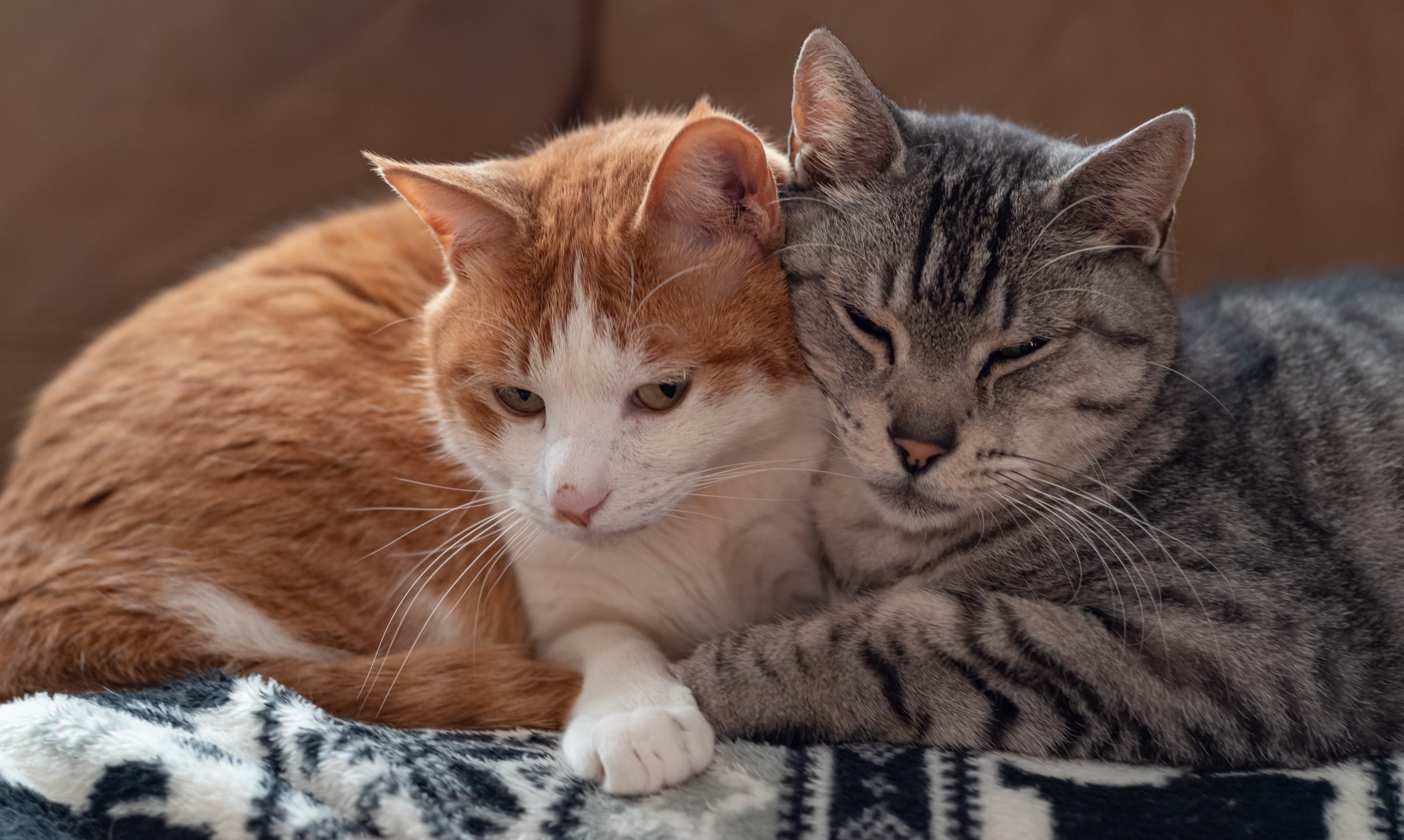How to Introduce a New Cat to Your Cat: Expert Tips for a Peaceful Home
The Short Answer: Introducing a new cat to your resident cat requires patience and a structured approach that typically takes 2-4 weeks. Keep them separated initially, use scent swapping, allow gradual visual contact, and progress to supervised interactions while monitoring body language for warning signs of stress.
Bringing a second cat into your home can enrich your life and provide companionship for your existing cat, but the introduction process requires careful planning. Many cat owners rush this transition, leading to stress, fear, and sometimes aggressive behavior between pets. The good news? With the right approach, you can give both cats the best chance at developing a positive relationship and achieving peaceful co-existence.
Why Do Proper Introductions Matter?
Cats are territorial creatures who thrive on routine and familiar scents. When you bring a new pet into their established territory, your current cat may feel threatened or anxious. A rushed introduction can create lasting negative associations that make future interactions difficult.
Proper introduction techniques help both cats feel safe and reduce stress during this transition. Whether you’re bringing home a shelter cat, a new kitten, or an adult cat, following a structured approach protects the emotional well-being of both animals and sets the foundation for a harmonious household.

Before You Bring Your New Cat Home
Set Up a Sanctuary Room
Before your new cat’s arrival home, prepare a separate room where they’ll stay initially. This sanctuary room becomes their safe space during the adjustment period.
What to include:
- Litter box (placed away from food and water)
- Food bowl and water bowl
- Scratching post or scratching pad
- Comfortable bedding and hiding place
- Toys and vertical spaces (cat tree or shelves)
This room should have everything your new addition needs to feel comfortable without accessing the rest of your home initially.
Another important thing to remember is a pre-introduction veterinary exam for your new cat. This ensures they are healthy and up-to-date on vaccinations, protecting both cats during the introduction process.
Gather Introduction Supplies
Stock up on items that will help facilitate a smooth transition:
- Pheromone diffusers for both rooms
- Baby gate for controlled visual contact
- Blankets or towels for scent exchange
- High-value treats for creating positive association
- Interactive toys for both cats
Step 1: Separation and Scent Introduction
Initial Isolation Period
Keep your new kitty in their sanctuary room without any direct contact with your resident kitty for the first time. This gives them time to decompress from the stress of moving while allowing your older cat to detect their presence through scent under the door. Plan for this phase to last at least a couple days or longer if needed.
During this period, both cats will likely display curiosity or anxiety. Your resident cat might pace near the door, vocalize, or act differently than usual. This is normal behavior as they adjust to knowing another cat is in the house.
Beginning Scent Swapping
After your new cat has settled into their safe place, start scent swapping to help cats become familiar with each other’s smell before meeting face-to-face. This is an effective method because cats rely heavily on scent for communication.
Scent exchange techniques:
- Rub a clean towel on one cat’s cheeks and let the other cat smell it
- Swap bedding between the two rooms every couple days
- Feed both cats on opposite sides of the door (using physical barrier of the door)
- Switch rooms temporarily so each cat explores the other’s space
If either cat shows extreme distress when encountering the other’s scent (hissing, growling, refusing to eat), slow down the process. Some cats need more time than others.
Step 2: Visual Contact Without Physical Interaction
Installing a Baby Gate
Once both cats show curiosity rather than fear when encountering each other’s scent, it’s time for visual contact. A baby gate allows them to see each other while maintaining a physical barrier. This typically happens after the initial separation period, but timing varies by cat.
Install the gate in the doorway of the sanctuary room. Start with brief viewing sessions while both cats are calm. Feed them treats or meals on opposite sides of the gate to create positive association with seeing each other.
Reading Body Language

Understanding feline body language helps you gauge whether the introduction is progressing well or needs to slow down.
Positive signs:
- Relaxed body posture
- Slow blinking or looking away
- Eating near each other
- Playing independently while aware of the other
- Tail up or in neutral position
Warning signs:
- Flattened ears
- Dilated pupils
- Tail lashing or puffed up
- Continuous hissing or growling
- Stalking behavior
- Refusing to eat
If you see multiple warning signs, increase distance between cats or return to an earlier stage of introduction.
Step 3: Supervised Physical Contact
First Face-to-Face Meetings
When both cats remain calm during visual sessions, you can allow physical contact under close supervision. Choose a neutral room (not the sanctuary room or your resident cat’s favorite spot).
For your first time:
- Keep sessions short and end on a positive note
- Have interactive toys ready for distraction
- Keep treats available for rewarding calm behavior
- Never force interaction but instead let cats approach at their own pace
- Have a towel or blanket ready to separate them if needed (never use your hands)
If any loud noise or sudden movement startles them, calmly separate and try again later. Some hissing or swatting is normal as they establish boundaries.
Gradual Increase in Together Time
Over the following days and weeks, extend the time cats spend together while continuing to provide the sanctuary room as a safe place for your new cat. This gives them an escape route if they feel overwhelmed.
During supervised sessions, engage both cats in play to create positive experiences. Social cats may warm up quickly, while more reserved personalities need additional time.
Managing Resources to Prevent Conflict
Multiple Feeding Stations
Never make cats compete for food. Set up separate feeding areas initially, even if you eventually want them to eat near each other. Place food bowls in different locations until they’re comfortable.
Litter Box Setup
The general rule is one litter box per cat, plus one extra. If you have two cats, you need three litter tray options placed in different areas. This prevents territorial disputes and reduces stress.
Territory and Escape Routes
Provide multiple vertical spaces, hiding place options, and scratching post locations throughout your home. Cats feel safer when they can escape to high ground or private areas when needed.
Special Considerations for Different Situations

Introducing a New Kitten to an Older Cat
A younger cat or new kitten typically adapts more easily than an adult cat, but your old cat may feel annoyed by kitten energy. Ensure your older cat has quiet spaces away from pestering and maintain their routine as much as possible.
Young kittens learn social skills from older cats, so some hissing and boundary-setting is healthy. Intervene only if play becomes too rough or your older cat seems genuinely distressed.
Bringing Home a Shelter Cat
A shelter cat may need extra patience during the introduction process. They’ve experienced significant change and may be more cautious. Give them additional time in their sanctuary room before starting introductions, sometimes a week or more.
Multiple Cat Households
If you’re adding a third (or fourth) cat, introduce the new cat to one resident cat at a time when possible. This prevents the newcomer from feeling overwhelmed by multiple feline personalities at once.

Helping Your Cats Thrive Together
The introduction process between a new cat and your resident cat takes time, but patience pays off with a harmonious multi-cat household. Remember that every cat has unique needs. Some achieve a positive relationship within weeks, while others need months to feel comfortable.
At Coastal Veterinary Care in Myrtle Beach, our compassionate team understands the challenges of bringing a new addition into your new home. If you’re experiencing difficulties with the introduction process or have concerns about your cats’ behavior, we’re here to help. Schedule an appointment with our fear-free certified veterinarians who can provide personalized guidance for your specific situation. Contact us today to give your cats the best chance at a happy life together.
Choose Coastal Veterinary Care in Myrtle Beach, SC
At Coastal Veterinary Care, we can help you determine an appropriate veterinary schedule that best supports your pet’s needs. From planning regular routine visits to understanding what to look for to identify when your pet may need to be seen to evaluate a specific injury or illness, we are here to help you make sure your pet gets the best possible care. Contact us today to learn more about why we are a trusted choice among pet owners in the Myrtle Beach, SC, area or to schedule an appointment!
